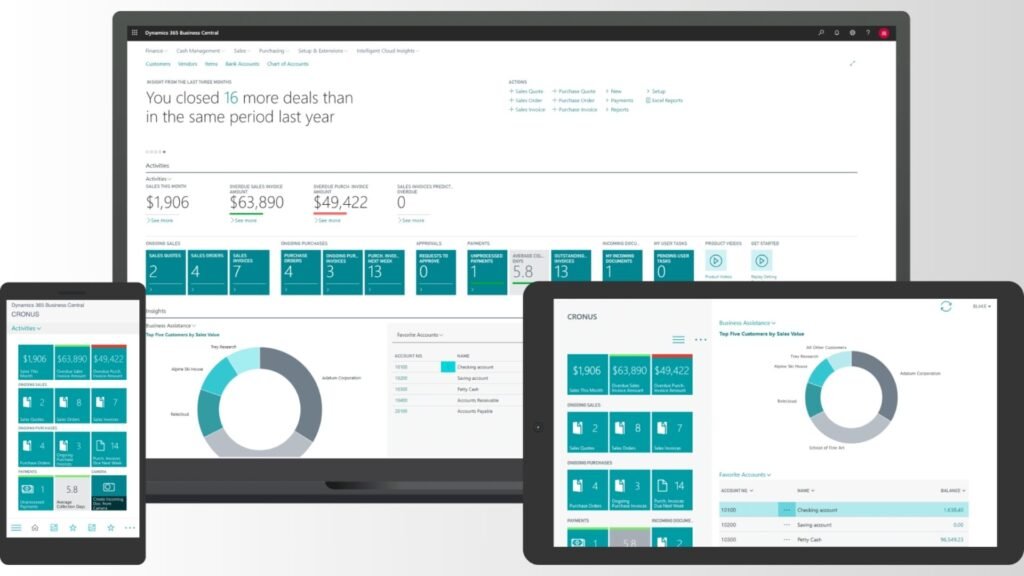24/7 Support for Dynamics 365 Finance & Operations – Is It Worth It?
In today’s fast-paced business world, downtime is not an option — especially for organizations running mission-critical operations on Microsoft Dynamics 365 Finance & Operations (D365 F&O). From managing supply chains to automating financial reporting, D365 F&O plays a pivotal role in helping enterprises maintain agility and control. But what happens when something goes wrong after business hours? That’s where 24/7 support for Dynamics 365 Finance & Operations becomes a true differentiator. Around-the-clock support ensures that your system stays up and running, no matter the time zone, workload, or complexity of the issue. Whether it’s resolving performance issues, applying patches, or managing an AX to D365 F&O upgrade in USA, continuous support can make all the difference. In this article, we’ll explore what 24/7 D365 F&O support entails, why it’s so valuable, and how partnering with a Microsoft Dynamics 365 partner in Texas USA can keep your business operations uninterrupted and compliant. The Growing Need for 24/7 ERP Support Modern enterprises operate in a connected, globalized environment. Manufacturing, logistics, retail, and finance sectors often work across different time zones. When operations run 24 hours a day, your ERP system must too. Imagine your D365 F&O instance going down during a weekend shipment or an end-of-month financial close. Without instant support, delays could cascade into lost revenue, compliance issues, or missed opportunities. This is why businesses are investing in 24/7 Microsoft Dynamics 365 support to guarantee continuous uptime and quick resolution of issues. For organizations in the U.S., especially those relying on Microsoft Dynamics 365 partner in Texas USA, having local yet round-the-clock assistance ensures problems are handled before they affect productivity or profitability. Understanding Microsoft Dynamics 365 Finance & Operations Dynamics 365 Finance & Operations (F&O) is Microsoft’s enterprise-level ERP solution designed for large and mid-sized businesses. It unifies financials, supply chain, manufacturing, and operations into one intelligent platform. With AI-driven analytics, process automation, and global scalability, D365 F&O helps companies streamline their operations, make data-driven decisions, and remain compliant across markets. However, as powerful as it is, D365 F&O requires regular updates, security patches, integrations, and performance optimization. This ongoing maintenance demands expert attention — and that’s where D365 F&O implementation partners in USA come into play. They provide not only implementation expertise but also continuous post-deployment support. What Does 24/7 D365 F&O Support Include? Comprehensive, round-the-clock Dynamics 365 support covers multiple areas, ensuring stability, compliance, and peak performance. Typical support offerings include: For companies undergoing an AX to D365 Finance & Operations Upgrade in USA, 24/7 support also ensures seamless transition and post-upgrade stabilization. AX to D365 F&O Upgrade in USA – Why Support Is Critical Many organizations that once relied on Microsoft Dynamics AX are now migrating to Dynamics 365 Finance & Operations. This AX to D365 F&O Upgrade in USA is not a simple software change; it’s a complete digital transformation. It involves rethinking business processes, data models, integrations, and compliance mechanisms. During and after the upgrade, 24/7 support becomes essential to: By partnering with experienced D365 F&O implementation partners in USA, businesses can reduce upgrade risks and achieve faster adoption while maintaining operational continuity. Why Choose a Microsoft Dynamics 365 Partner in Texas USA for 24/7 Support Choosing a local, certified Microsoft Dynamics 365 partner in Texas USA provides significant advantages for businesses looking for continuous system support and strategic guidance. Here’s why: 1. Local Expertise, Global Coverage Partners based in Texas offer local time zone support but also collaborate globally to provide 24/7 coverage. You get real-time support without delays, ensuring system uptime and smooth operation across all business hours. 2. Proactive Monitoring These partners deploy advanced monitoring tools that detect potential issues before they impact users. From CPU performance and SQL optimization to integration errors, proactive monitoring keeps your D365 F&O healthy. 3. Regulatory and Localization Support Businesses operating in the U.S. must comply with GAAP, tax, and regional reporting standards. Local partners are well-versed in these requirements and configure D365 F&O accordingly. 4. Upgrade & Migration Expertise For companies undergoing an AX to D365 F&O upgrade in Texas USA, local partners bring technical know-how and industry experience to ensure smooth migration, validation, and training. 5. Cost-Effective, Scalable Service Plans Top Microsoft D365 F&O implementation partners in USA offer flexible support models — from pay-as-you-go to managed service contracts — ensuring you get 24/7 assistance within your budget. Benefits of 24/7 Dynamics 365 F&O Support Let’s explore the tangible benefits businesses gain from round-the-clock ERP support: 1. Minimized Downtime Continuous monitoring and rapid issue resolution minimize system disruptions. Even minor delays in ERP systems can impact production, payroll, or customer delivery schedules — 24/7 support keeps your operations running. 2. Enhanced Security and Compliance Cyber threats and data breaches don’t follow business hours. With continuous support, your ERP is monitored for vulnerabilities, ensuring patches and updates are applied promptly. This is crucial for compliance with SOX, GDPR, and industry-specific regulations. 3. Improved System Performance Support teams regularly review performance logs, optimize database queries, and ensure integrations with CRM, Power BI, or supply chain systems are functioning at optimal efficiency. 4. Faster Resolution with Expert Teams Certified D365 F&O experts are available at all times, meaning your issues are handled by professionals familiar with your system architecture, configuration, and business processes. 5. Peace of Mind for IT Teams In-house IT staff often juggle multiple responsibilities. Outsourcing support to Microsoft Dynamics 365 partner in Texas USA allows internal teams to focus on innovation and business strategy rather than firefighting. The Role of Microsoft D365 F&O Implementation Partners in USA Beyond technical support, Microsoft D365 F&O implementation partners in USA play a strategic role in helping businesses achieve long-term ERP success. Their responsibilities extend across the entire ERP lifecycle: These partners bring a mix of technical expertise, industry knowledge, and Microsoft certification, ensuring your investment in Dynamics 365 delivers measurable returns. The Hidden Costs of Not Having 24/7 Support Many companies assume that ERP support during business hours is enough — until a system issue strikes
24/7 Support for Dynamics 365 Finance & Operations – Is It Worth It? Read More »






